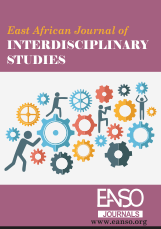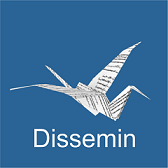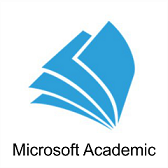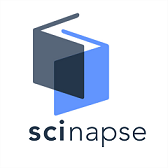Effect of Computer Simulations on the Retention of Biology Content Among Form Three Students in Public Secondary Schools in Kesses Sub-County, Kenya
Abstract
This study investigated the effect of computer simulations on the retention of Biology content among Form Three students in public secondary schools in Kesses Sub-County, Kenya. Guided by Constructivist Learning Theory, this study adopted a mixed-methods approach combining a quasi-experimental design using the Solomon Four-Group model with a descriptive survey design. The population consisted of 1,755 Form Three students and their Biology teachers across 39 public secondary schools. A sample of 240 students from four co-educational schools was selected using simple random sampling. The experimental groups were taught using computer simulations. In contrast, the control groups received instruction through conventional methods such as chalk-and-talk and traditional Practical over a six-week instructional period. Data were collected through pre-tests and post-tests to assess academic performance and content retention, as well as questionnaires and lesson observation checklists to evaluate student engagement and teaching practices. Quantitative data were analysed using descriptive statistics, paired t-tests, and ANOVA. The results indicated that students exposed to computer simulations demonstrated significantly higher retention of Biology content compared to those taught using traditional methods. The findings provide practical implications for Biology teachers, curriculum developers, education policymakers, and stakeholders interested in leveraging technology to enhance science education in Kenya
Downloads
References
Adebayo, A. O., Olalekan, A. A., & Oladele, O. A. (2016). Effects of computer simulation on academic achievement and retention of students in biology. International Journal of Educational Technology, 3(1), 22–30.
Akhigbe, B. O., & Ogufere, A. O. (2020). Effects of computer simulation on secondary school students' achievement in biology. Journal of Science, Technology, Mathematics and Education, 16(1), 1–13.
Anoje, C., Agu, K. A., Oladele, E. A., Badru, T., Adedokun, O., Oqua, D., ... & Chabikuli, O. N. (2017). Adherence to on-time ART drug pick-up and its association with CD4 changes and clinical outcomes amongst HIV infected adults on first-line antiretroviral therapy in Nigerian hospitals. AIDS and Behavior, 21(2), 386-392.
Araoye, F. O., Oladipo, O. I., & Olawale, O. A. (2013). Students’ difficulties in understanding biology concepts: A case study of some secondary schools in Ogbomoso, Nigeria. International Journal of Education and Research, 1(4), 1–10.
Asogwa, U. D., Ude, M. U., & Diogu, G. O. (2016). Effects of computer simulation on students' achievement in biology in Enugu State, Nigeria. International Journal of Education and Research, 4(6), 1–12.
Bennett, W. D., & Tieleman, D. P. (2013). Computer simulations of lipid membrane domains. Biochimica et Biophysica Acta (BBA)-Biomembranes, 1828(8), 1765-1776.
Cano, I. M., Shevliakova, E., Malyshev, S., John, J. G., Yu, Y., Smith, B., & Pacala, S. W. (2022). Abrupt loss and uncertain recovery from fires of Amazon forests under low climate mitigation scenarios. Proceedings of the National Academy of Sciences, 119(52), e2203200119.
Chen, Z., Wang, Y., Yu, G., & Liu, X. (2017). Using simulations to promote learning in biology: Effects on academic performance and student engagement. Journal of Educational Computing Research, 55(8), 1158–1175.
Comer, A. (2012). What makes biology learning difficult and effective: Students’ view. Educational Research and Reviews, 7(3), 61-71.
Dakhi, S., Jama, J., & Ifran, A. (2020). Technology integration in education: The use of ICT in teaching biology. Journal of Educational Technology Systems, 48(3), 345–368. https://doi.org/10.1177/0047239519882546
Darwish, S., & Hamad, M. (2021). Transforming science teaching through virtual simulations: A systematic review. International Journal of Instructional Technology and Distance Learning, 18(5), 13–28.
Eddy, S. L., Brownell, S. E., & Wenderoth, M. P. (2014). Gender gaps in achievement and participation in multiple introductory biology classrooms. CBE—Life Sciences Education, 13(3), 478-492.
Egemen, E. (2018). The role of simulations in science education: A review. European Journal of Science and Mathematics Education, 6(2), 64–70.
Elangovan, N., & Ismail, H. (2014). Simulation-based learning in biology: A systematic review. Asian Journal of Education and e-Learning, 2(5), 359–365.
Ema, I. E. (2021). The influence of computer simulations on students’ academic achievement and retention in biology in Nigeria. International Journal of Science and Technology Education Research, 12(3), 42–51.
Ezeaghasi, C. N., Obochi, N. I., & Ocechukwu, O. B. (2018). Computer simulation and students’ performance in DNA replication. Nigerian Journal of Educational Technology, 10(2), 15–24.
Ezeudu, F. O. (2013). Effect of computer-assisted instruction on students’ achievement in biology. Science Education International, 24(2), 156–165.
Gambari, A. I., Yaki, A. A., & Olowe, M. B. (2013). Enhancing secondary school students’ achievement and retention in biology through computer-assisted instruction. International Journal of Modern Education and Computer Science, 5(6), 26–34.
Joyce, K., Mulinge, M., & Wambua, E. (2021). Simulation and demonstration methods: Effect on science achievement. Kenya Journal of Education Planning Economics and Management, 13(2), 90–101.
KNEC. (2018). Kenya Certificate of Secondary Education Examination Report. Kenya National Examination Council.
Kutcher, S., Wei, Y., & Coniglio, C. (2016). Mental health literacy: Past, present, and future. The Canadian Journal of Psychiatry, 61(3), 154–158.
Mohamed, A. A., Ahmed, K. A., & Salim, H. A. (2014). The influence of computer simulations on students’ retention in biology. International Journal of Education and Development using ICT, 10(2), 71–83.
Morehead, K., Dunlosky, J., Rawson, K. A., Blasiman, R., & Hollis, R. B. (2019). Note-taking habits of 21st century college students: implications for student learning, memory, and achievement. Memory, 27(6), 807-819.
Obonyo, S. A. (2023). Enhancing student achievement in biology: The role of innovative instructional strategies in Kenya. African Journal of Science Education, 3(2), 112–124.
Olufemi-Phillips, A. Q., Ofodile, O. C., Toromade, A. S., Eyo-Udo, N. L., & Adewale, T. T. (2020). Optimizing FMCG supply chain management with IoT and cloud computing integration. International Journal of Management & Entrepreneurship Research, 6(11), 1-15
Opara, J. A., Wokocha, A. M., & Okoli, J. N. (2018). Simulation models and their relevance in modern biology teaching. Nigerian Journal of Curriculum and Instruction, 25(1), 90–98.
Orodho, J. A. (2022). Curriculum implementation challenges in teaching biology in Kenyan secondary schools. Kenya Journal of Education Planning, Economics and Management, 14(1), 45–56.
Samikwo, R. T. (2013). Factors affecting students’ performance in biology in Kenya Certificate of Secondary Education Examination in Kenya. International Journal of Advanced Research in Biological Sciences, 1(2), 45–52.
Seyhan, H. G., Ata, R., & Uncu, R. (2015). The role of simulation in teaching environmental science: A Turkish perspective. European Journal of Educational Studies, 7(3), 203–212.
Srivastava, D., Kumari, A., & Gond, P. K. (2020). Promoting inquiry-based learning in biology through digital tools. International Journal of Science and Research, 9(5), 165–171.
Tantry, M., & Sofi, H. A. (2022). Simulation-based learning and retention in biology. Journal of Educational Psychology, 14(2), 78–85.
Tarbutton, T. (2018). The influence of integrating ICT tools in science education: Global perspectives. Journal of STEM Education, 19(1), 56–64.
Tavasuria, Y., & Hashemi, R. (2013, 2017). The effect of realistic simulations on understanding meiosis and mitosis. International Journal of Biology Education, 6(1), 31–45.
TeachThought. (2023). What is simulation-based learning? Retrieved from https://www.teachthought.com
University at Buffalo. (2024). Benefits and limitations of simulation-based learning. Retrieved from https://www.buffalo.edu
Vlachopoulos, D., & Makri, A. (2019). The effect of games and simulations on higher education: A systematic literature review. International Journal of Educational Technology in Higher Education, 16(1), 1–33. https://doi.org/10.1186/s41239-019-0134-5
Wang, F. (2020). Integrating simulation into secondary science education: Challenges and prospects. Asia-Pacific Education Researcher, 29(2), 157–165.
Wekesa, M. F., Wekesa, M. N., & Amadalo, M. M. (2013). Simulation as a strategy for enhancing science instruction in Kenyan schools. Kenya Journal of Education and Instruction, 2(3), 57–65.
Copyright (c) 2025 Joshua Hydah Karambu, Omwenga Ezekiel, PhD, Omosa Elijah, PhD

This work is licensed under a Creative Commons Attribution 4.0 International License.




























